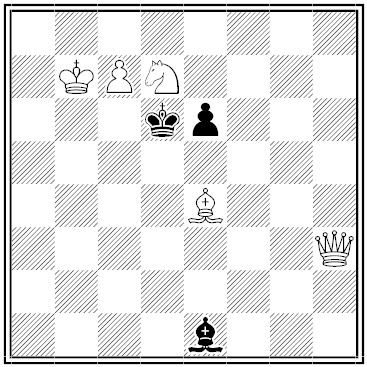“To breed an animal with the right to make promises — is not this the paradoxical problem nature has set herself with regard to man?” — Nietzsche
Far From Home
Two or three of them got round me and begged me for the twentieth time to tell them the name of my country. Then, as they could not pronounce it satisfactorily, they insisted that I was deceiving them, and that it was a name of my own invention. One funny old man, who bore a ludicrous resemblance to a friend of mine at home, was almost indignant. ‘Ung-lung!’ said he, ‘who ever heard of such a name? — ang-lang — anger-lang — that can’t be the name of your country; you are playing with us.’ Then he tried to give a convincing illustration. ‘My country is Wanumbai — anybody can say Wanumbai. I’m an ‘orang-Wanumbai; but, N-glung! who ever heard of such a name? Do tell us the real name of your country, and then when you are gone we shall know how to talk about you.’
— Alfred Russel Wallace, “The Aru Islands,” The Malay Archipelago, 1869
Billy Cote

How do you occupy a goat? Build a tower for it. Portuguese winemaker Fernando Guedes da Silva da Fonseca built the first “torre das cabras” in the 1820s, a three-story stone tower surrounded with a spiral ramp made of logs.
Inspired by Fonseca, vintner Charles Back built a tower of his own at the Fairview Wine and Cheese Farm in South Africa in 1981 (shown here). Goats are intelligent, gregarious, and curious, and they like to climb, so Fairview offers the tower to a select few of the 1,000 goats in its winelands.
Inspired in turn, Illinois farmer David Johnson built a 31-foot tower in Findlay, Ill., for his 34 Saanen milk goats. “Goats love it, and people driving by can’t believe it,” Johnson told Farm Show magazine. “Goats are the most curious animals in the world, so they use the tower a lot. They come and go, passing each other on the ramp as needed.”
“People often ask if any goats ever fall off the tower, and I always tell them the answer is no because goats are very sure-footed. Once in a while we do get freezing rain, and then I use a portable torch to melt the ice from the steps.”
The South African tower has also been replicated in Norway and Argentina. Let’s hope they’re not planning a takeover.
All Relative
A problem from Dick Hess’ All-Star Mathlete Puzzles (2009):
A man points to a woman and says, “That woman’s mother-in-law and my mother-in-law are mother and daughter (in some order).” Name three ways in which the two can be related.
Harm’s Way

On Sept. 9, 1900, the day after a strong storm made landfall on the Texas coast, the U.S. Weather Bureau wired Western Union, Do you hear anything about Galveston?
The first response was We have been absolutely unable to hear a word from Galveston since 4 p.m. yesterday …. But then:
First news from Galveston just received by train which could get no closer to the bay shore than six miles, where Prairie was strewn with debris and dead bodies. About two hundred corpses counted from train. Large Steamship stranded two miles inland. Nothing could be seen of Galveston. Loss of life and property undoubtedly most appalling.
The storm had put the entire city under 8 to 15 feet of water and lashed it with winds reaching 145 mph. With 8,000 dead, it remains the deadliest natural disaster in U.S. history. Following is the only account known to have been written while the storm was taking place — it’s an unsigned letter by a woman, probably a nurse, who was employed at the John Sealy Hospital:
A.M.
It does not require a great stretch of imagination to imagine this structure a shaky old boat out at sea. The whole thing rocking like a reef, surrounded by water, said water growing closer, ever closer. Have my hands full quieting nervous, hysterical women.12-noon.
Things beginning to look serious. Water up to the first floor in the house, all over the basement of the hospital. Cornices, roofs window lights blinds flying in all directions.The scenes about here are distressing. Everything washed away. Poor people trying, vainly to save their bedding, & clothing. Methinks the poor nurses will be trying to save their beds in short order. Now flames in the distance. It is all a grand, fine sight. Our beautiful Bay, a raging torrent.
3 p.m.
Am beginning to feel a weakening desire for something ‘to cling to.’ Should feel more comfortable in the embrace of your arms. You hold yourself in readiness to come to us? Should occasion demand? Darkness is overwhelming us, to add to the horror. Dearest — I — reach out my hand to you. My heart — my soul.
That’s all we have — we don’t know who wrote the letter, or whether she survived the storm (the hospital remained standing).
According to some survivors, we’re lucky to have any accounts at all. “One hour more of that wind would have killed every person on the island,” wrote Walker W. Davis, a salesman who waited out the storm in the Tremont Hotel.
Margaret Rowan Bettencourt, who was 9 years old at the time, remembered that the East End, where her grandmother’s house was located, was largely reduced to splinters. “They never would’ve found her place, but my aunt had a ‘polly’ [parrot] that was up in the attic and the attic didn’t go to pieces. It just sat on the top of the house and the next morning the polly was hollering ‘Pretty Polly. Pretty Polly.’ That’s how they found where they lived.”
Unconvinced

In February 1962 John Glenn circled Earth three times on Friendship 7.
When he landed, he received a card from the International Flat Earth Research Society.
It said, “OK wise guy.”
Insight
In 1945, Oxford University’s Museum of the History of Science realized that 14 astrolabes were missing from its collection. Curator Robert T. Gunther had arranged for storage of the museum’s objects during the war, but both he and the janitor who had helped him had died in 1940. The missing instruments, the finest of the museum’s ancient and medieval astrolabes, were irreplaceable, the only examples of their kind. Where had Gunther hidden them?
The museum consulted the Oxford city police and Scotland Yard, who searched basements and storerooms throughout the city. The Times, the Daily Mail, and the Thames Gazette publicized the story. Inquiries were extended to local taxi drivers and 108 country houses. At Folly Bridge, Gunther’s house, walls were inspected, flagstones lifted, and wainscoting prised away. A medium and a sensitive were even consulted, to no avail. Finally the detective inspector in charge of the case reviewed the evidence and composed a psychological profile of Gunther, a man he had never met:
Clever professor type, a bit irascible, who didn’t get on too well with his colleagues. Single minded. Lived for the Museum. Hobby in Who’s Who ‘… founding a Museum’. Used to gloat over the exhibits and looked upon them as his own creation. Never allowed anyone else to handle them. Reticent, even secretive. Never told anyone what he what he was going to do. Didn’t trust them, perhaps. Not even his friends the Rumens, who would have offered their car to move the things. Had original ideas though. Safe from blast below street level. Germans would never bomb Oxford. Why, its total war damage was £100 and that from one of our own shells. How right he was. He never expected to die then. Believed he’d live to 90. Hadn’t made any plans; like most of us he thought he might get bumped off when the war started. That’s what he was telling his son in those letters. There was only one conclusion with a man like that anyhow: he’d never let the things out of his reach if he could have helped it. Didn’t even take the trouble to pack his own treasures away in Folly Bridge.
In 1948 the new curator found the missing instruments — they were right “within reach” in the museum’s basement. Gunther had disguised their crate with a label reading “Eighteenth-Century Sundials,” and it had evaded detection throughout the searches.
From A.E. Gunther, Early Science in Oxford, vol. XV, 1967, 303-309.
(Thanks, Diane.)
Black and White
Roots
In the old times these isles lay there as they do now, with the wild sea round them. The men who had their homes there knew naught of the rest of the world and none knew of them. The storms of years beat on the high white cliffs, and the wild beasts had their lairs in the woods, and the birds built in trees or reeds with no one to fright them. A large part of the land was in woods and swamps. There were no roads, no streets, not a bridge or a house to be seen. The homes of these wild tribes were mere huts with roofs of straw. They hid them in thick woods, and made a ditch round them and a low wall of mud or the trunks of trees. They ate the flesh of their flocks for food, for they did not know how to raise corn or wheat. They knew how to weave the reeds that grew in their swamps, and they could make a coarse kind of cloth, and a rude sort of ware out of the clay of the earth. From their rush work they made boats, and put the skins of beasts on them to make them tight and strong. They had swords made from tin and a red ore. But these swords were of a queer shape and so soft that they could be bent with a hard blow.
— Helen W. Pierson, History of England in Words of One Syllable, 1884
Art Appreciation

If we stand immediately below a painting in a gallery, it appears foreshortened. But if we stand on the other side of the room, it appears small. Somewhere between these two points must be the optimum viewing position, where the painting fills the widest possible angle in our vision. How can we find it?
The German mathematician Regiomontanus posed this question in 1471. We can solve it using calculus, but it also yields to simple geometry: Draw a circle defined by the top and bottom of the painting and our eye level. That’s the point we want — any other point at eye level will define a larger circle, in which the picture makes a smaller chord and subtends a smaller angle.
(Thanks, David.)

